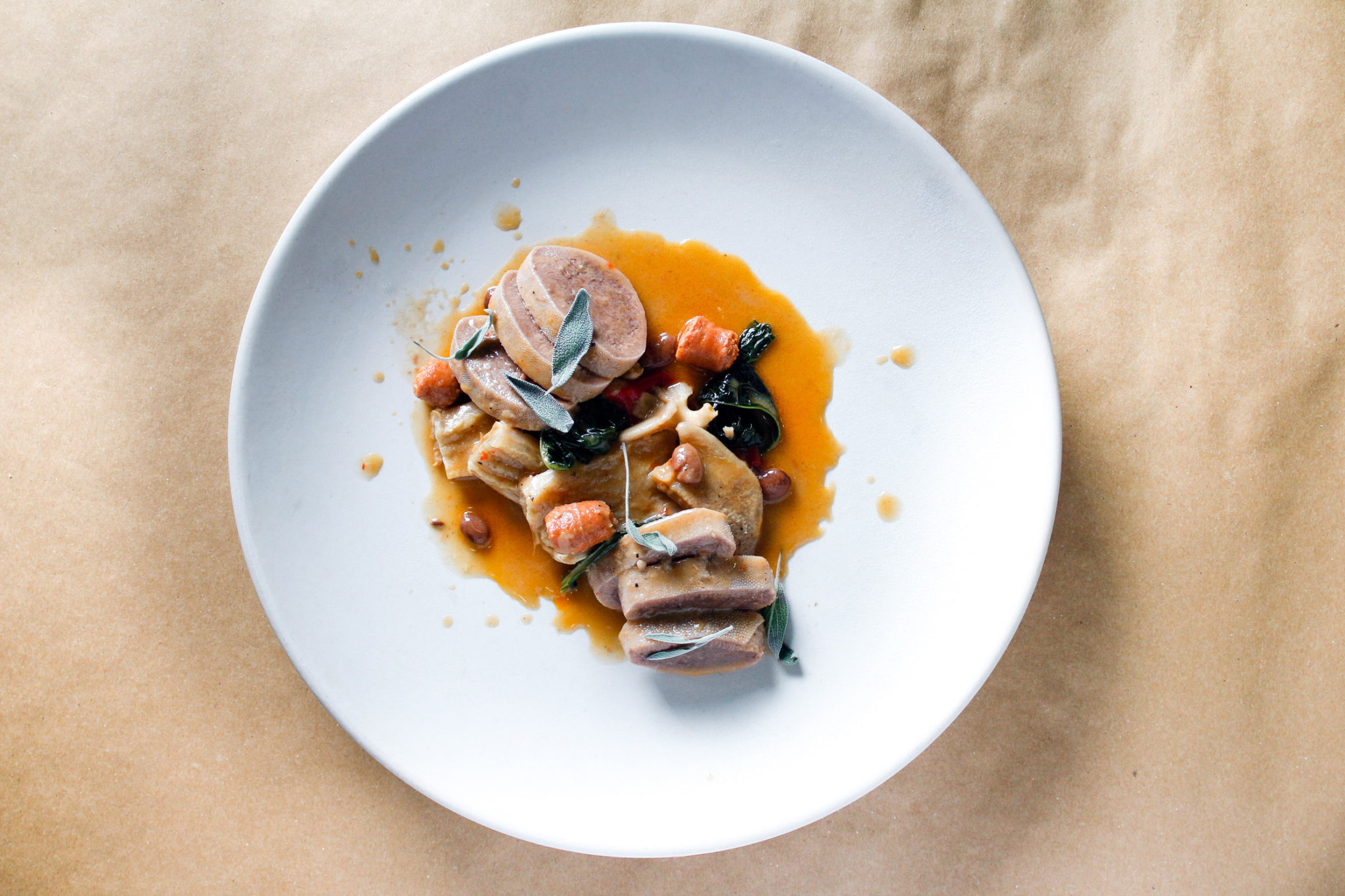With prices of meat constantly on the rise, the demand for high quality options is at its peak. Sourcing the best possible cuts for quality and price is a constant struggle and today, more than ever, we are faced with the challenge of being sustainable and kind to the animals we slaughter.
Traditionally, offal was the part of the animal left for the working class. But while they are considered the less prized pieces of meat, these humble tidbits demand the highest of cooking skills to master.
As a chef, I feel a social responsibility to respect life. By this, I mean encouraging the consumption of all parts of an animal. Innards can be visually stomach-churning yet behind their visceral appearance lie flavorful masterpieces waiting to be discovered. Ironically, while offal is not everyone’s cup of tea, it’s highly versatile and used in myriad dishes—from patés and stews to sausages and roasts. It’s just a matter of picking the right cut that determines the desired result.
While offal is not everyone’s cup of tea, it’s highly versatile and used in myriad dishes—from patés and stews to sausages and roasts. It’s just a matter of picking the right cut that determines the desired result.
I have always been a fan of ox tongue, mostly for its relatively subtle flavor and meaty texture. It’s perfect for pot roasts and stews and when combined with the simplest of vegetables, it can make any dinner truly memorable.
Tripe, on the other hand, is slightly more challenging to work with. As it comes from the stomach lining, cleaning it is at the essence of making it work for you. Pre-soaking and washing are musts to ensure any foul odor does not remain.
The next time you come across those gruesome cuts in the market, take a second to remember the endless possibilities they offer and, if you are like me, show a bit more respect to the many ways nature feeds us.
Ox tongue and tripe stew
Serves 6 to 8
Cooking time: 7 hours total
Ingredients
1 piece ox tongue
2 tbsp salt
1 tbsp whole black peppercorns
2 pieces bayleaf
1 medium onion, chopped
1 head garlic, peeled and chopped
2 tbsp olive oil
4 tbsp butter
500 grams ox tripe, pre-cleaned
3 sprigs fresh thyme
2 tbsp fresh parsley, chopped
3 tomatoes, chopped
2 carrots, chopped
100 grams oyster mushrooms
Salt, to taste
Black pepper, to taste
Procedure
- Soak ox tongue in water overnight. The next day, drain and discard the water. Rinse the tongue then place it in a stock pot with enough water to cover. Bring to a boil. Remove any scum from the surface.
- Add salt, whole black peppercorns, and a piece of bayleaf and simmer for 3 to 5 hours, or until tender. The slower, the better.
- Once tender enough to pierce with a fork, remove ox tongue from the water and let cool. Gently pull the skin away from the flesh and reserve.
- Preheat a stockpot and sauté onions and garlic in butter and oil until translucent. Add the cooked ox tongue, tripe, and remaining ingredients. Pour two liters of water and bring to a slow boil. Cook for 2 hours or until all ingredients are tender. Garnish with fresh herbs and serve hot.
Originally published in F&B Report Vol. 13 Issue 1





